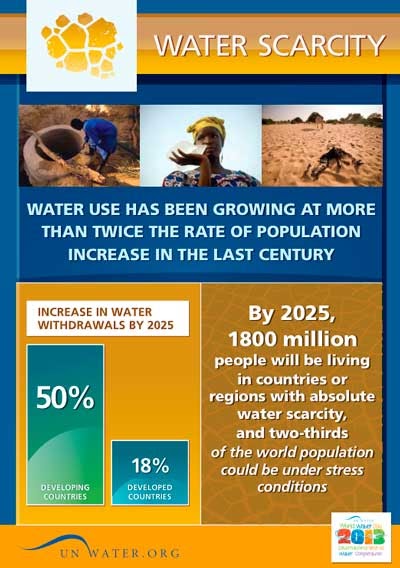There are several barriers and challenges to developing and implementing smart water management systems. The following details a number of these challenges:
Technological challenges
Despite technological developments, there is still a need for improving smart water meters, sensors for water deficiency and quality, technologies for monitoring water-related agro-ecosystem services, and software tools for remotely controlled operational activities. This challenge is more acute in developing countries where there are also barriers related to the slow rate of technical assimilation and power outages.
The high cost of installing and maintaining smart water systems
Smart water systems cost millions of dollars to install, update, and maintain, and therefore often require collaborations between the public and private sectors. Furthermore, these financial limitations also mean that policymakers must frequently decide between investing in typical water maintenance systems (e.g. that still rely on passive control and visual detection of leaks) or in deploying systems which include advanced digital solutions that can drive long-term efficiencies.
Security needs of water management systems
Security is a critical issue that requires regulation, financial investment and technological innovation. So far, the issue has been addressed to an extent by using cyber-security systems and by anonymising customer data to maintain privacy. However, as technologies continue to evolve, and new threats arise, new protocols and encodings need to be developed to configure water management systems in ways that will prevent information leaks. Thus the issue requires an ongoing monitoring, investing and improving existing water systems.
The complexity of adopting new technology
The perceived complexity of smart water systems and the challenges of new technology adoption can often deter decision makers from choosing to use them. The operators of water and wastewater treatment facilities often avoid installing smart equipment because decision makers consider the installation, operation, and maintenance to be complex and risky.
Water regulations and public policy can encourage the use of digital solutions. For example, the California Sustainable Groundwater Management Act encourages the development of long-term water use strategies. This has led to the development and adoption of cost-effective digital technologies that measure water use in real time. In the UK, the Water Services Regulation Authority (OFWAT) incentivises process automation and the use of digital technologies to improve water and wastewater services.
Data sharing, integration, interoperability, and standardisation
Water utilities are complex organisations with many data silos, and most of them have legacy systems that contain critical information and valuable historical context. Therefore, it is increasingly difficult to ensure integration and interoperability between various systems. These objectives can be achieved through standardisation, which facilitates data sharing and interoperability by using open architecture
